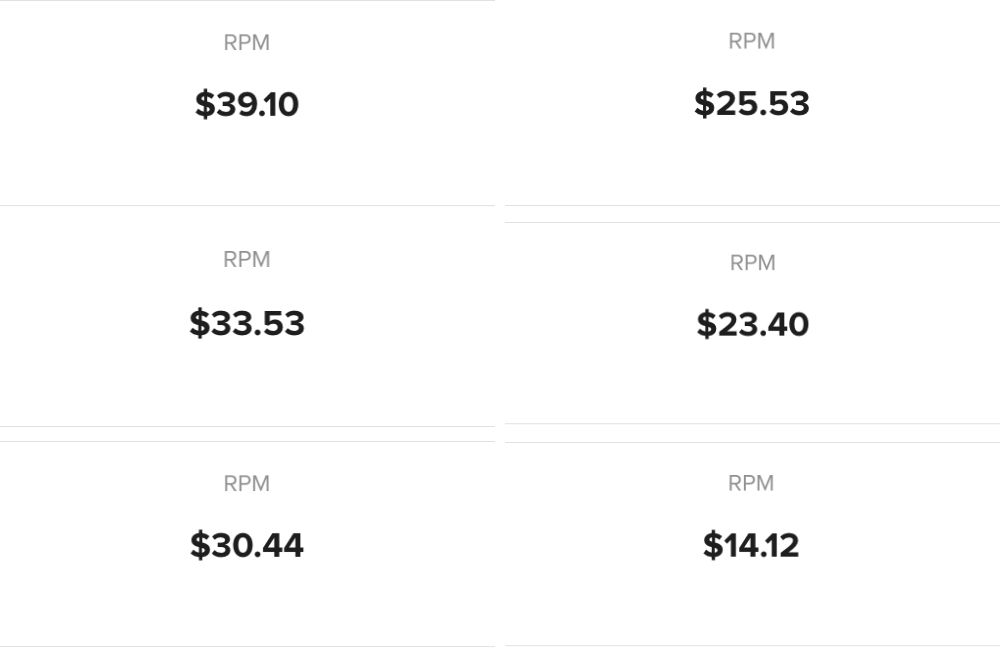I’ve been blogging for nearly a decade. I guess that makes me an old-timer. I started blogging for a brick and mortar business and it evolved from there.
Over the years, I’ve seen a lot of stuff.
I will say this about this industry and that is there are some clever folks out there. I ain’t one of them. I’m pretty boring. I’m really just a publisher, not some clever marketer.
The other day my wife and I were talking about some of the really effective ads and marketing we’ve seen online. Some of it is hilarious. It got me thinking about all the clever, funny, extremely effective (plus some very spammy stuff) I’ve come across over the years.
I’m not advocating you do any of the stuff below. Some of it I would never do, but I do tip my hat to how clever it is. That’s the point.
Here are a few clever, funny and effective online marketing tactics I’ve come across.
1. Fake copyright infringement claims for links
I don’t like this tactic but I must admit it’s clever.
Here’s how it works.
Link builder contacts site owners alleging copyright infringement for various images on the site when link builder knows they don’t own the copyright. Link builder says all will be forgiven and in fact, you can use the image as long as you link to XYZ.com (their site or their client’s site).
This is a bully tactic. They’re banking on the fact many bloggers an website owners use images without permission or a license. Those website owners get scared and to avoid any problem immediately agree to create the link asked for (even though the link builder doesn’t own copyright either).
It’s all well and good until these link builders contact someone like me. I have licenses and/or written permission for the images I use so I know they’re full of it. I take them to task and reply with a little aggressiveness myself.
I wrote all about this tactic here.
2. False scarcity software
This is totally legit and clever.
Deadline Funnel us one such software that does this.
It works like this.
Blogger Joe sells a course. He focuses on building an email list and promotes his course to those subscribers.
Blogger Joe knows scarcity sells. Whenever he puts a deadline on his course, it sells in droves.
This is where software like Deadline Funnel comes in. They make it possible to make it seem like Blogger Joe’s course will close in X days for all new email subscribers.
This is a very clever strategy that works like gangbusters.
Do I do it?
Nope. I probably should if I wanted to make way more money. I’m not morally opposed to it, but I do admit it’s not 100% above-board.
3. Ad Arb
Actually, I don’t think ad arb as a concept is spammy at all.
It was and is a thing of beauty.
I did pretty well with it for a couple of years (2014 to 2016). As with all arb situations, the margins disappear over time once the cat is out of the bag.
Looking back, I wish I had capitalized on it more.
What is ad arb?
It’s buying low-cost traffic to ad-supported sites (or affiliate sites for that matter) and earning more than you spend.
Put $1 in and get $2 out. It’s literally a cash machine as long as you can scale up your traffic.
That makes it sound easy and conceptually it’s easy. In practice, it was tougher. It took a lot of management and oversight. Running 100+ FB and Outbrain ad campaigns require daily maintenance.
Does ad arb work now?
Yes, it does. I know some people doing it successfully. It’s not nearly as easy or widespread, but if you’re clever with your content, monetization and ads, it still works with Facebook traffic.
Do I do it now?
No. I do buy some traffic here and there but that’s more for rifling a pile of traffic at some content and it’s usually short term. I don’t buy it in the hopes of earning a profit on the spread.
What happened?
The 2 main entities, Facebook and Google, that made it possible to put the squeeze on it. Facebook started cracking down on extensive paginated websites loaded with ads. Google also cracked down on paginated content by removing the Nessie arrows in ads which garnered so many clicks.
When I did it I had a hunch it wouldn’t last forever. That’s why when I was doing it I simultaneously built out my sites for organic search. That turned out to be a smart move because now I get more organic search traffic than I ever bought.
4. Quizzes
The right quiz presented to the right audience selling the right product can generate monster revenue.
It’s a brilliant marketing tactic that’s totally legit. Not a spammy aspect to it at all. I use them promoting stuff as an affiliate. I sleep at night.
In fact, a thoughtful quiz actually helps people choose the right product/service for their needs. It nudges them in a direction that suits their needs based on how they answer the questions.
5. Sneaky shifting ads (DO NOT DO THIS)
This is unbelievable and it’s still happening today. Some ad arb sites inject code for their ads just below or above pagination buttons that shift the ads up or down just as you’re about to click the “Next page” link. Instead, visitors click the ad. The RPM for these sites must be astronomical.
This is outright click fraud.
6. Free software for leads
Nothing wrong with this tactic as long as the promised software materializes.
I love promoting software as an affiliate because it sells. It sells better than courses and many physical products. The perceived (and often actual value) is insanely high for the price.
Nearly every business these days uses software. Us bloggers use all kinds of software. I couldn’t run my biz without software. I’d pay a lot more for some software than I do.
While most software charges monthly fees, some software is created purely for lead-generation. This is super clever and can build massive, relevant email lists quickly.
I know because I do lead gen with a software I license for one of my niche sites. It works great.
7. $5.95 shipping for garbage trinkets
This online business model never passed my sniff test, but it’s only borderline questionable. After all, customers do get something of value for the money they spend.
Th model works like this.
You, the marketer buy 100 niche-specific trinkets at Aliexpress. Perhaps dolphin bracelets for $1.10 each. They look all shiny and cool. Dolphin lovers will want them.
You offer them for free but, and here’s the kicker” you charge $5.95 for shipping while actual shipping costs you $1.00 per bracelet.
See the potential.
You get to advertise it’s free, but make stupendous profits by charging a high shipping fee.
The perceived value is high (free trinket). We’re used to paying shipping and psychologically that’s acceptable.
It’s kinda like “resort fees” at resorts. These annoy me (but I pay them anyway). You book a room at a resort advertised at $250 per night. You then show up and are charged an additional $45 per day that’s chalked up as a resort fee. And get this, it’s not optional. I sometimes joke to the desk person when checking in “what if I don’t want to use the resort amenities and instead just use my room, can I avoid the resort fee?” They respond “no, you have to pay.”
This kind of pricing simply doesn’t sit well with many people but we pay. When I book a room at a resort, it’s not unreasonable for me to believe that the room price I book at includes the fancy pools shown in all the photos, right?
8. Piggyback course creation
Piggyback course creation is brilliant if you can sell stuff online well. I can’t at all so I don’t do this, but I don’t have a problem with this strategy either.
Here’s how it works.
You (the superb sales person) look for people having success with some online business model. It may be SEO, a niche site, ecomm … something.
You approach them proposing a JV where you wrap up their model, success, stats and screesnhots into a course. Basically, you get a top-notch proven business model or opportunity to sell. You’re the salesperson
In order for this to work, you must know how to sell, whether it’s writing copy, running webinars, making sales videos, setting up funnels, etc.
The split can be 50/50 or 60/40 whatever you and the actual course creator agree on.
It can be a huge win/win.
The person with the know-how is often too busy to create a course and do all the marketing.
The piggyback course salesperson has time to help create the course and set up the marketing funnel(s).
9. CONGRATS! You’re our 1 millionth visitor.
This was an absolute beauty.
3.5 years ago a company contacted me asking to place a banner ad on my site. They wanted above the fold in the sidebar.
I asked them how much they were willing to pay on a CPM (cost per 1,000 impressions) basis.
They replied $7.00 USD.
I was amazed they were offering so much. $7.00 CPM for one ad unit in the sidebar is a lot of money. That amounts to $7,000 per month for 1 million page views.
I said “sure things. Send the ad over.”
That was the first ad spot I ever sold directly. If I were to do it again, I’d ask to see the ad first. I didn’t.
The sent me this ugly GIF banner with flashing emojis and the following copy:
CONGRATS!
You’re our 1 millionth visitor.
CLICK HERE TO CLAIM YOUR PRIZE
The click-through rate on this ad was astronomical (as you can imagine).
The visitors were sent to some CPA lead gen form that flowed nicely from the ad making it seem like they had to fill in the form to claim a prize. The fine print of course said they were “entering to win” such and such. But nobody read that. They just see “Claim your prize” on the landing page with some outrageous offer.
The whole thing was a typical CPA funnel.
They must have printed money.
I let the ad run for a few months because I agreed to it. However, once our agreement ended, I didn’t renew.
The money to me was excellent, but stuff like that doesn’t exactly endear an audience.
Regardless, it was a brilliant ad with an equally brilliant lander.
10. “So long Rock”
This is my favorite. I wouldn’t do it, but it’s undeniably smart.
I never click ads (but I do pay attention to them on every site I visit). However, the ad with text “So long Rock” on Facebook got me to click. It’s without a doubt the smartest ad I’ve ever seen.
The text is “So long Rock” with a Dwayne Johnson photo.
As soon as I saw that, I was like “dang, did The Rock die?” I instinctively clicked.
Yeah, I’m a Dwayne Johnson fan. I like some of his movies. I love the Ballers TV show.
My wife saw the “So long Sally Field” ad. Like me, she clicked.
The ads took us to some clever landing page that was selling some garbage pills or something. I can’t remember. What I do remember is the ad.
I’m not sure these can run anymore on FB but I bet they were getting 50% CTR on those suckers while they were running.
Now that’s clever.

Jon Dykstra is a six figure niche site creator with 10+ years of experience. His willingness to openly share his wins and losses in the email newsletter he publishes has made him a go-to source of guidance and motivation for many. His popular “Niche site profits” course has helped thousands follow his footsteps in creating simple niche sites that earn big.






